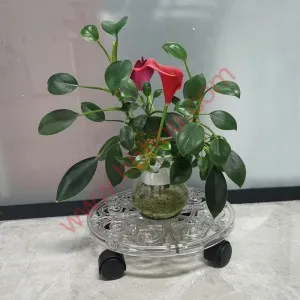Utilizing Tomato Cages as Trellises A Gardening Guide
Gardening enthusiasts and novice gardeners alike are always on the lookout for effective ways to support their plants and maximize their yields. One often-overlooked solution is using tomato cages as trellises. This method is not only practical but also cost-effective, providing sturdy support for various climbing plants. In this article, we will explore the benefits of using tomato cages as trellises, the types of plants that can benefit from this technique, and tips on how to set them up properly.
The Benefits of Tomato Cages as Trellises
Tomato cages are traditionally designed to support tomato plants, ensuring they have the vertical growth space they need without sprawling on the ground. However, their design is versatile enough to be utilized for other climbing plants as well. Here are some key advantages of using tomato cages as trellises
1. Sturdiness Most tomato cages are made from heavy-duty materials like metal or strong plastic, providing a robust structure that can withstand wind, rain, and the weight of mature plants. This durability helps plants grow vertically without risking breakage or damage.
2. Improved Air Circulation By elevating plants off the ground, tomato cages allow for better airflow around the foliage. Improved air circulation reduces the likelihood of fungal diseases, which are often exacerbated by stagnant air and moisture on the ground.
3. Easier Harvesting With plants lifted off the ground, harvesting becomes a simpler task. This not only saves time but also minimizes the risk of bruising or damaging the fruit. Gardeners can easily reach for ripe vegetables and fruits without having to bend down or crawl through foliage.
4. Space Efficiency Vertical gardening is an excellent option for those with limited space, such as urban gardeners. Using tomato cages allows more plants to be cultivated in a smaller area, giving each plant enough room to thrive while maximizing the overall garden productivity.
5. Aesthetic Appeal Tomato cages can also enhance the visual appeal of a garden. By training plants to grow vertically, gardeners can create structured and visually interesting arrangements that draw the eye and make gardens look more organized.
Suitable Plants for Tomato Cage Trellising
While tomato cages are specifically designed for tomatoes, many other plants can benefit from this type of support. Here are some excellent candidates suitable for trellising with tomato cages
- Cucumbers Cucumbers naturally climb, and providing them with a cage allows them to grow upwards. This results in straighter fruit and reduces the risk of disease due to improved airflow.
tomato cage as trellis

- Peas Peas are another climbing plant that thrives when given support
. A tomato cage can help them grow tall, making it easier to harvest the pods.- Beans Both bush and pole beans can benefit from the structure of a tomato cage. The cage provides a strong, stable place for the bean vines to climb, maximizing yield.
- Squash and Zucchini While traditionally grown on the ground, smaller squash varieties can benefit from a trellising system. Using a tomato cage can help prevent the fruit from resting on the soil and being prone to rot.
Setting Up Your Tomato Cage Trellis
Setting up a tomato cage as a trellis is a straightforward task. Here’s how you can do it
1. Choose the Right Location Select a sunny spot in your garden where the plants will receive ample sunlight, and ensure there is enough space for the plants to grow.
2. Insert the Tomato Cage Push the tomato cage firmly into the ground, ensuring it is stable and secure. It should be buried deep enough to withstand the weight of the growing plants.
3. Plant Your Seeds or Seedlings Depending on the type of plant, sow seeds or transplant seedlings at the base of the cage. Be sure to place them close enough to the cage to encourage them to climb.
4. Guide the Plants As the plants grow, gently guide their vines towards the cage. You may need to use garden ties or twine to help secure them to the cage initially.
5. Monitor Growth Watch the plants as they grow, ensuring they are climbing the cage effectively. This may require some adjustment and encouragement, especially in the early stages.
In conclusion, using tomato cages as trellises is a practical and beneficial technique for supporting various climbing plants in your garden. By taking advantage of their sturdiness and space-saving qualities, you can enhance plant health, improve yields, and create a more visually appealing garden space. Whether you're a seasoned gardener or just starting, experimenting with this method can elevate your gardening experience. Happy gardening!
















